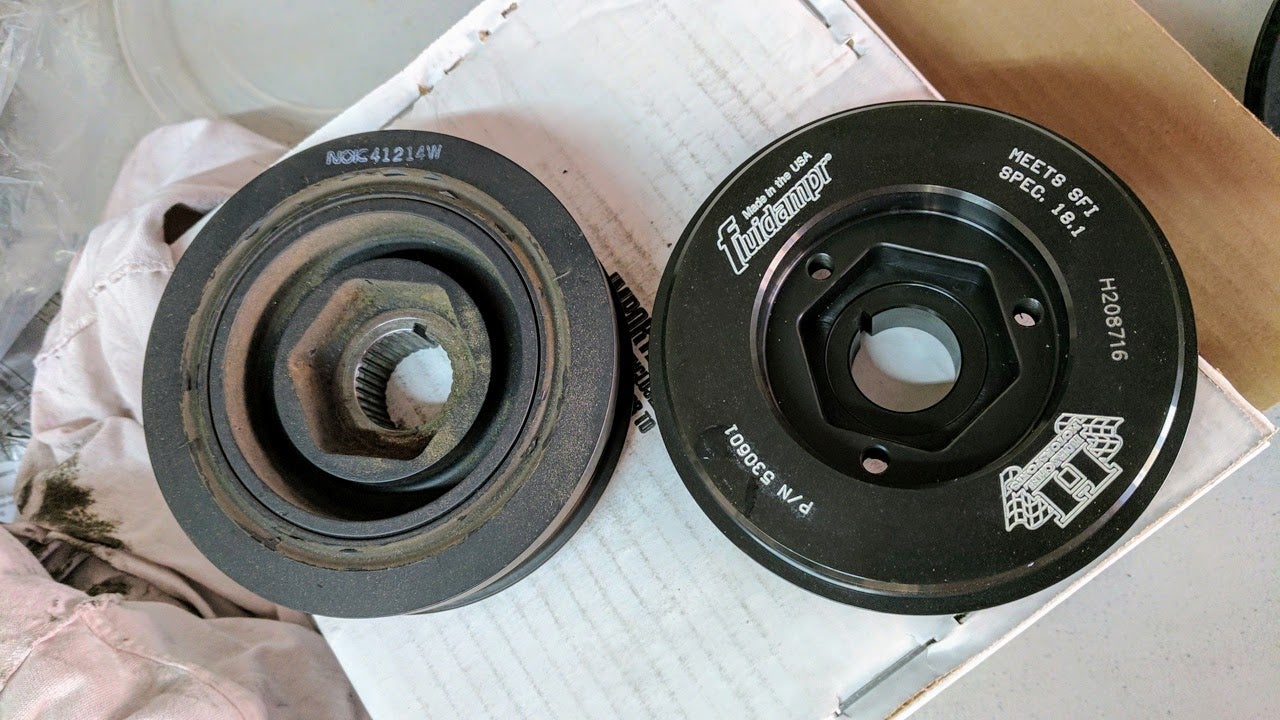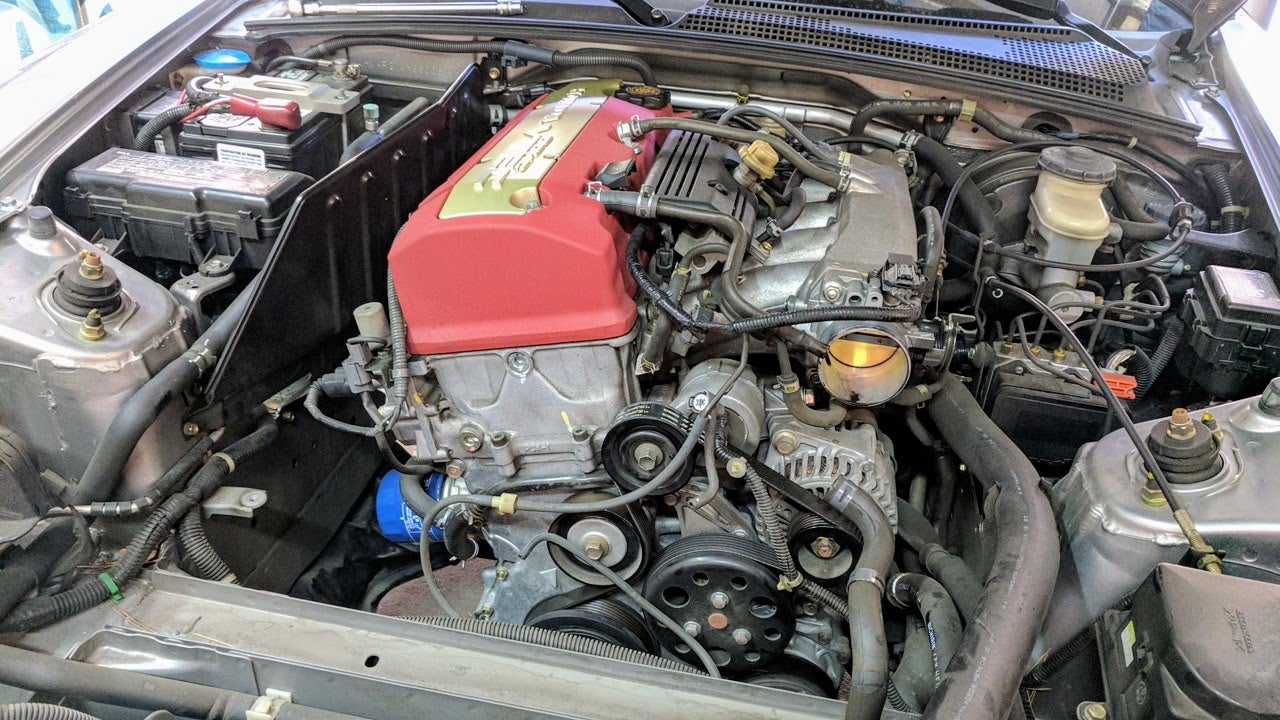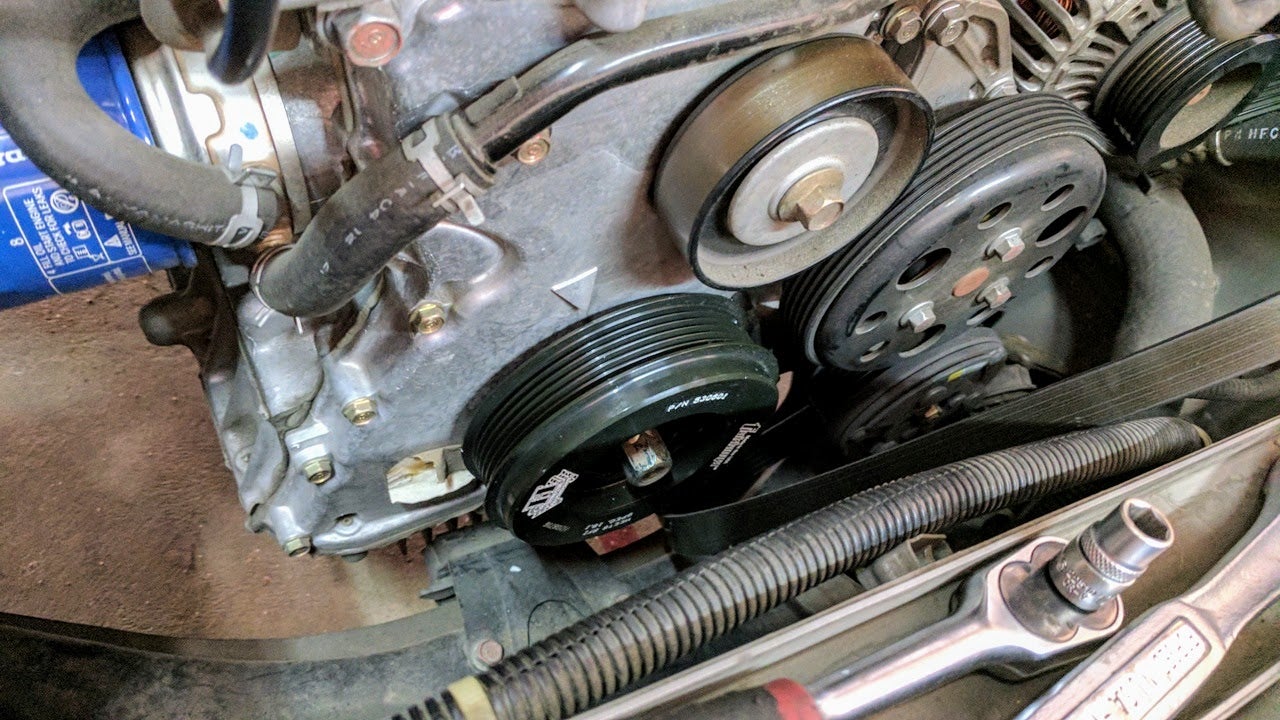 by "RiceRocketeer Extraordinaire" (ricerocketeer2)
by "RiceRocketeer Extraordinaire" (ricerocketeer2)
Published 05/22/2017 at 15:30
 by "RiceRocketeer Extraordinaire" (ricerocketeer2)
by "RiceRocketeer Extraordinaire" (ricerocketeer2)
Published 05/22/2017 at 15:30
No Tags
STARS: 1

Original crank pulley on the left with 71k miles, new one from Fluidampr on the right. Question is, do these things work? Online reviews are mostly just subjective impressions, some dyno runs with really no significant difference. Does it really help the engine run any smoother though?


The car is completely stock, except for a set of Vibratechnics engine mounts that did increase vibration and noise by ... (on an arbitrary butt-scale) ... 20ish%. The damper feels like itís reduced that back down by about 10% especially past 3k rpm. In fact, I find myself revving the car out more frequently now as doing so feels less harsh than it did before.
I wanted something besides my butt-vibrometer (heh) to tell me that something actually changed though. I installed a vibrometer app on my phone and drove around before and after the damper was installed.

Before on the left, after on the right. It was about 30 minutes to/from a friendís place on local streets so hopefully that would cover road quality and a larger portion of the rev range. The mean and max values are lower after the install ... yay, woot, hooray, etc.
Caveats: no idea what the scale exactly means , how the mounting system may have attenuated the vibrations going to the phone, whether the rev range I used was similar in the before/after test, etc, so your mileage will vary. I would guess that with OEM-softness engine mounts the effect may be less pronounced too.

That said, vibrations are noticeably reduced, Iím very happy with the way it turned out, and Iím also glad it wasnít just the placebo effect making me feel this way.
 "jimz" (jimz)
"jimz" (jimz)
05/22/2017 at 15:37, STARS: 4
vibration dampers- especially on engines with shorter-length crankshafts- arenít really meant to improve performance. Theyíre to damp out the torsional harmonics which can lead to cracking or breakage of the crank, especially on highly-tuned engines.
on an engine like an inline-6 with a long crankshaft, the torsional vibration can cause measurable timing inconsistencies between cylinders and a better damper might help you.
 "RiceRocketeer Extraordinaire" (ricerocketeer2)
"RiceRocketeer Extraordinaire" (ricerocketeer2)
05/22/2017 at 15:44, STARS: 0
Yep, wasnít looking for any gains, just improved feel. Extended engine life would be a plus too.
I had a Honda K20A2 (RSX) that was much smoother than the F22 and was a joy to rev out - thatís what I was hoping to get to.
 "Sweet Trav" (thespunbearing)
"Sweet Trav" (thespunbearing)
05/22/2017 at 16:11, STARS: 0
What you said about long crank engines is very true, itís not just crank length, offset crank pins can cause torsional flex as well. RPM range also plays a factor in the durability and frequency of the damper. A non-bonded rubber damper can have trouble keeping up at high RPM, a bonded damper is better, and viscous damper is the best for extended high rpm use, and surprisingly extremely low RPM use with very high amplitude (diesels) for NVH. A viscous damper being more stable than a rubber damper might not mean much on a ford 302, but on a high RPM Honda motor, it may be a good investment.
 "Urambo Tauro" (urambotauro)
"Urambo Tauro" (urambotauro)
05/22/2017 at 17:22, STARS: 0
Iíve noticed that OEM dampers typically have a bit of rubber inside, while racing ones appear to be solid. Is that because racing dampers need to eliminate the rubber to keep the weight from spinning out of balance?
I was thinking that maybe the rubber piece actually helps dampen vibrations further, but itís just too risky to keep around in racing applications.
 "Junkrat aka Rick Sanchez: Fury Road Edition" (realasabass)
"Junkrat aka Rick Sanchez: Fury Road Edition" (realasabass)
05/22/2017 at 17:50, STARS: 0
The real difference is the the stamp that reads ďMeets SFI SpecĒ.
 "nerd_racing" (nerd189)
"nerd_racing" (nerd189)
06/05/2017 at 13:17, STARS: 0
Thatís a pretty nice looking damper. Someone did a good job designing it!
I bet that PTO pattern will come in handy if you ever go SC or dry sump.
 "nerd_racing" (nerd189)
"nerd_racing" (nerd189)
06/05/2017 at 13:18, STARS: 1
Racing ones are solid Shelled because SFI Spec 18.1 mandates 90% of the inertia ring be covered by a permanent structure to keep it from flying off under operation.
 "RacinBob" (racinbob)
"RacinBob" (racinbob)
06/12/2017 at 19:44, STARS: 1
Yes, itís the crankshaft harmonics that the fluidamper deals with. Its surprising how much force and damage they cause if not dampened.
Those billet alloy underdrive dampers look cool, but they cause havoc for things like oil pumps. Iíve even seen crankshafts break on undampened engines.